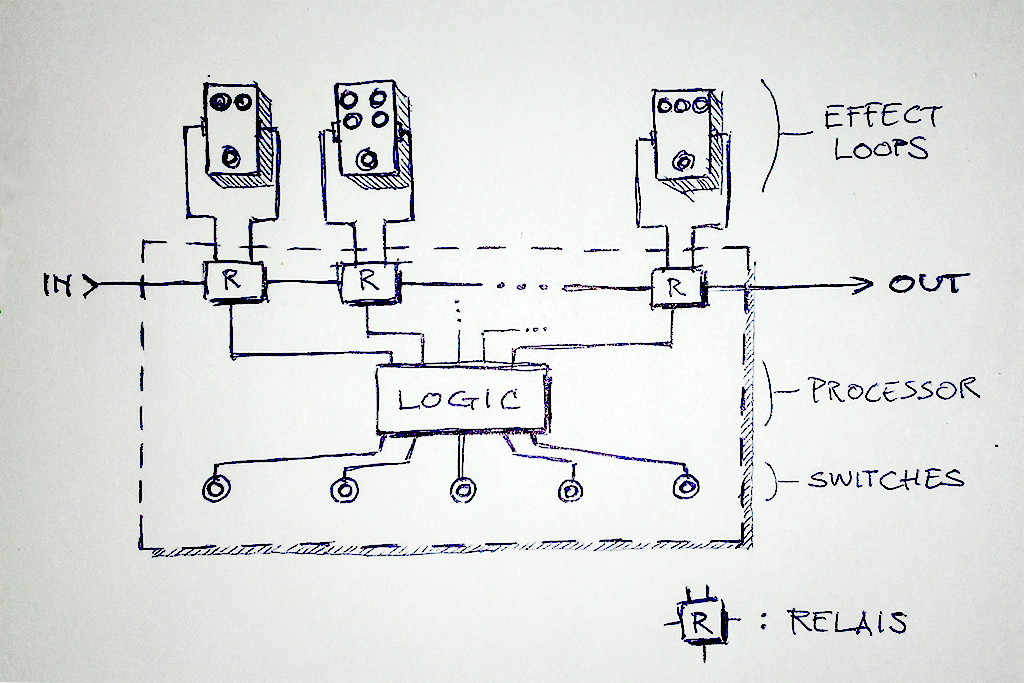Why a loop switcher?

Like most guitar geeks I too am cursed with an incurable disease named GAS. For those who may have never heard of it before: it’s an acronym which stands for Gear Aquisition Syndrome, or the irresistible urge to try and buy new guitar gear. All this in the holy search for the ultimate sound.
Lately I’ve been pretty satisfied with my most basic gear: my main guitars and amplifiers haven’t changed for about two years now. However, what will always keep my GAS going is the world of so called stomp boxes. Small separate effects units, each with their single special purpose (e.g. chorus, reverb, overdrive,…). They are mostly operated by foot (‘stomped’), have some control knobs and the guitar signal enters on one side and exits processed on another side. Plain and simple.
What makes stompboxes so tempting to buy is the fact that they are relatively cheap (a small fraction of the price of a good guitar or amplifier), they all have their unique characteristics and you can combine them in an infinite number of ways. Every new stompbox may be a possible upgrade to your sound.
The only drawback in using stompboxes is that you often find yourself tapdancing during a performance. Getting the right pedals engaged on time sometimes requires life threatening manoevers – I’ve had moments where I almost fell off-stage in an attempt to disengage a compressor and engage an overdrive, a booster, a delay and a wah pedal, all in a fraction of a second.
It’s this drawback that made me decide I need something that can do the switching for me. In such a way that I only have to press one button and it ‘knows’ what effects to engage. These tools exist on the market these days, so I started an extensive investigation on which one would best suit my needs.

My use case would be to use the switcher for gain effects in the first place. Engaging a delay, tremolo, chorus or phaser a tad late is barely noticeable. However, engaging a compressor, a booster, an overdrive or a distortion a fraction off the beat can be very annoying. This also implies that the switcher should operate very fast and without any interruptions in the sound.
Why build one myself?
I’ve come across a lot of pedal switchers. Some cheaper than others, but still expensive enough for me to be critical on their features.
I’m also aware that the more advanced the product, the sooner it will become deprecated. Soon enough there will be other products that will better suit my needs (that are also subject to change). Whenever I get a feeling that the thing is missing the appropriate features, there’s not much holding me back to write some new code, drill some extra holes, do a complete re-casing…
And as a last, but certainly not least argument, comes the fact that I like to learn how things work. I like to experiment and explore new possibilities. I’m pretty confident that this project will open up new doors to other interesting pathways.
I’ve put together some stomp boxes in the past, so how hard can it be to make a loop switcher myself? Can’t be too hard, can it? 🙂
